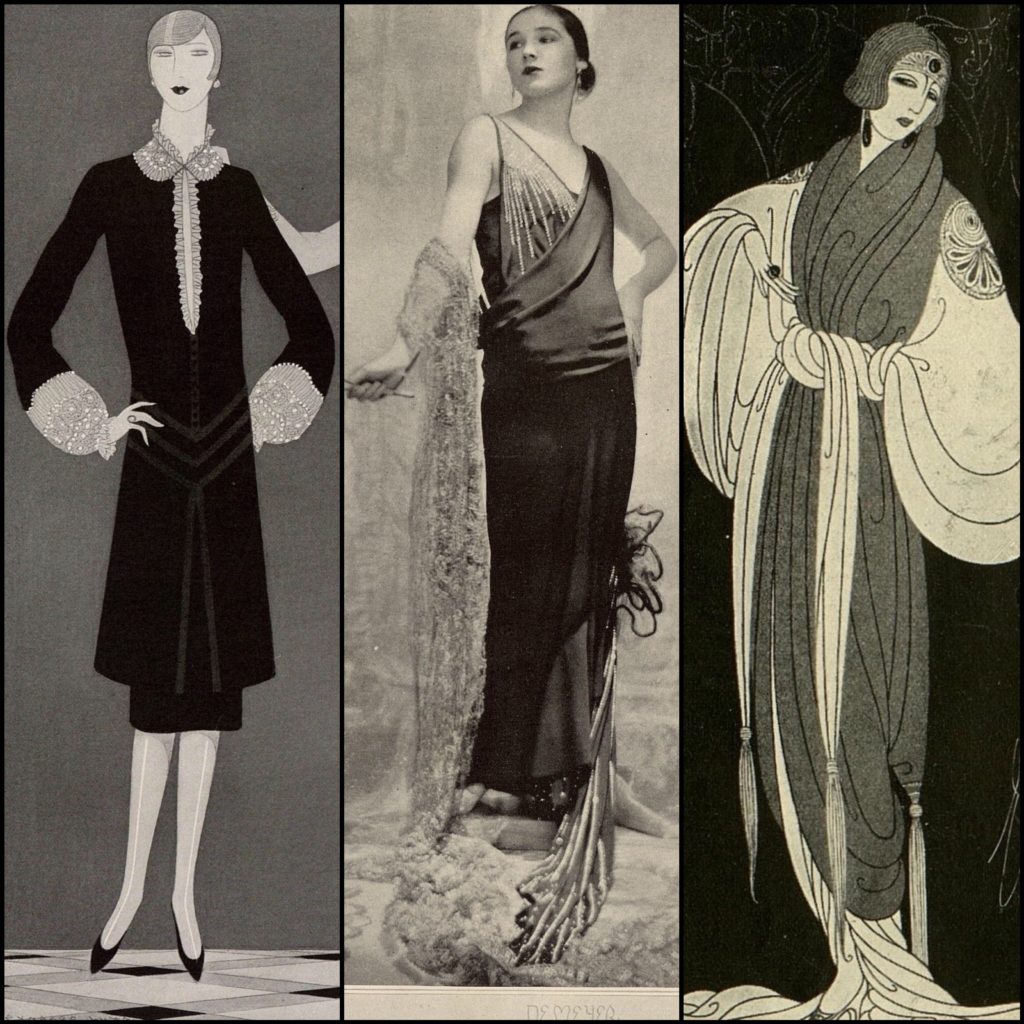
Interwar fashion editorials contain a dizzying mix of visual styles. Extending over multiple pages, several illustrators’ work is interspersed between photographers’ interpretations of the newest styles. How fascinating to see Boutet de Monvel’s soft pencil sketches of modern suits – with force lines suggesting a model’s movement – next to hazily romantic photographs by Baron de Meyer that focus on the glimmer of evening gowns.
Such juxtapositions require a sophisticated reader, one able to adjust her eye rapidly to varied representational styles and to understand the ways each artist invites her to consider body, dress and context. While most fashion photography of the era was studio bound, this did not hamper the vision of de Meyer, Edward Steichen and their peers – modernist, surrealist and realist elements featured in Vogue and Harper’s Bazaar. While drawings of contemporary fashion ranged widely, from Érte’s extravagant fantasies to the minimal lines of Reynaldo Luza. Collections coverage therefore came in the form of enticing experiments that combined a centuries old art form – drawing with the newest photographic technology.
For Fashion Interpretations I focus on American fashion magazines of the 1920s and 1930s to analyse these wide-ranging editorials. How does clothing resonate in each medium? Does the reader/viewer experience fashion differently in illustration and photography? And how does each artist’s style and interpretation impact fashion’s meanings?
By working alongside the international team of curators, academics, writers, illustrators, stylists and journalists taking part in our Fashion Interpretations Network, I can discuss my research with specialists in various media and explore my findings from different perspectives. It is exciting to consider the results of working in such a stimulating environment – to discover the significance of medium to fashion’s meanings.


Like!! Great article post.Really thank you! Really Cool.